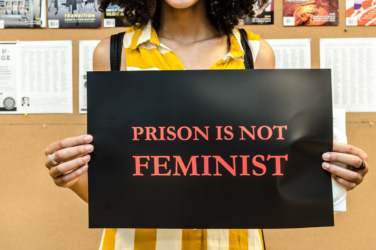Alaska is implementing a new law that requires all schools to have naloxone on hand, in response to the severity of the state’s opioid-involved overdose crisis.
Alaska lawmakers passed House Bill 202 in May, and Governor Mike Dunleavy (R) signed it into law on August 30. The bill requires school districts to have at least two doses of naloxone on site, with a staff member trained to administer it. The state health department of health will provide both the medication and training videos.
In the first week of September, the Alaska Beacon reported, health officials started sending naloxone kits out to schools. The state has so far prepared 500 kits, of which around 200 have been dispatched. The rest are set to be delivered within 90 days.
“Anything that increases visibility of the reality of overdose is helpful.”
Robin Lutz, the executive director of the Alaska AIDS Assistance Foundation, said that she welcomes this measure, although much more is needed.
“Anything that increases visibility of the reality of overdose is helpful,” she told Filter. “[Whatever helps] people understand that anyone including students are vulnerable to the risks of drug use. Every access point we can create to prevent overdose death is positive.”
Alaska, with a vast area but a relatively small population, is currently seeing some of the worst overdose trajectories in the United States. According to the latest CDC data, overdose deaths there surged by nearly 47 percent from March 2023-March 2024—the biggest increase in the nation. The year of 2023 saw a record-high 364 reported deaths in the state.
Alaska now joins dozens of other states nationwide that have changed their laws to bring naloxone onto school campuses. According to a 2023 analysis by US New & World Report, a total of 33 states had passed laws allowing schools to keep and administer naloxone. But a smaller number—only nine—had laws requiring some K-12 schools to do so. (These numbers have since increased.)
Schools and lawmakers that have taken these steps can know the feds are on their side here. Guidelines from the Substance Abuse and Mental Health Services Administration (SAMHSA) state: “Ensuring ready access to naloxone in schools, including elementary schools, aligns with HHS’ strategic approach to prevent overdose deaths. With naloxone as part of an emergency protocol and readily accessible, a school nurse or other staff members can quickly administer it.”
Naloxone in schools can save lives. CDC data show that from 2019-2021—a time when the COVID-19 pandemic helped drive up all overdose deaths—average monthly deaths of victims aged 10-19 more than doubled over two equivalent time periods. Those involving unregulated fentanyl nearly tripled. The overwelming majority of deaths involved opioids, and about a quarter involved pressed pills.
Many of the deaths could easily have been prevented: Two thirds of cases had at least one bystander present. Most did not intervene.
“Having open conversations from a harm reduction perspective with youth around safer use [is] not something that’s happening in this state.”
But schools having naloxone, while vital, is not enough, Lutz said: “The impact around access to supplies like naloxone will have a greater impact if it’s paired with harm reduction education.” This would include information about protecting yourself from blood-borne diseases like HIV and hepatitis C, the risks of combining certain substances, and more—equivalent to the sex education many students already receive.
“Making sure bystanders have access to naloxone and be able to use it is huge,” Lutz continued, “but having open conversations from a harm reduction perspective with youth around safer use, including info about not using alone—doing that work with youth is really important. It’s not something that’s happening in this state.”
Harm reductionists and others in Alaska agree that fentanyl is ubiquitous there, having replaced heroin in the supply, as in other states. “There’s no heroin anymore,” said Crislyn Carmack of the Alaska AIDS Assistance Association, in an interview with Anchorage Daily News. “I don’t hear anything about it. It’s fentanyl, fentanyl, fentanyl.”
Lutz confirmed this. “We’ve seen a big shift in the state since COVID, from heroin to fentanyl and from injection to smoking,” she said. “That’s affected a lot of the ways we program. We used to give out over a million sterile syringes a year through our program—as we’ve seen that shift, we now stock non-injection supplies like bubbles and pipes. People are really in need of those supplies and are excited we have them.”
The amount of naloxone they’re giving out has also “really skyrocketed over the past year or so.”
“There has been a real community movement among grassroots organizations, tribes and villages up here to embrace harm reduction.”
Although there’s much more to be done, Lutz said that the state health department has been an effective partner with the AIDS Alliance, and they work together on the state’s Project HOPE—an initiative to increase naloxone distribution through community organization.
“There has been a real community movement among grassroots organizations, tribes and villages up here to embrace harm reduction,” she said. “There’s a lot of collaboration and communication—we got calls from all over the state telling us ‘we need a syringe program up here, how did you start yours?’”
But in a huge, primarily rural state like Alaska, people can be reached more effectively by mailing harm reduction supplies, Lutz explained. The Alaska Native Tribal Health Consortium has a successful example with its I Know Mine program. “If we have the ability to mail [supplies] to people, the need is definitely there.”
Photograph of Anchorage street by dancingnomad 3 via Flickr/Creative Commons 2.0





Show Comments